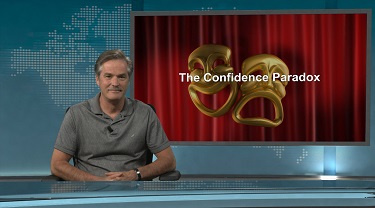If there’s a summer Scrooge, well, he’s pretty active this year. Any seasonal joy could easily be nixed by fears of recession, higher interest rates, political unrest, trade turmoil, climate change—the list goes on. It’s the kind of thing that could easily put the bite on travel plans, summer projects, any kind of discretionary spending that we’d otherwise do as we kick back to spend time with family and recharge for the fall. Are we in for a rough season? Are consumers really that gloomy?
When they get down, consumers tend to drag everyone down with them. They are a large chunk of any economy, and when sinking confidence tightens the purse strings, businesses, international traders and eventually governments tend to rein in their activities too. It’s worse when confidence collapses after a period of consumer euphoria, as it was likely a period of excess that the average consumer can live off for a while. So, with all these reasons to be grumpy, what are consumers saying?
In short, the total opposite. Surveys of consumer confidence are almost universally positive. Admittedly, we are down from the peaks seen in the current cycle, but the numbers remain impressively high. In the United States, multiple surveys corroborate this. The June drop in The Conference Board index was like going down one flight of stairs from the top of a skyscraper. In the University of Michigan survey, it was down just a step or two. Same message from the National Federation of Independent Business’ employment intentions survey.
But is that just a U.S. thing—what about the rest of the world? Things have been testy in the European Union, but consumer confidence, while off its peak, is still closer to post-recession highs than not. Europeans are generally downbeat about the general economic situation over the next 12 months, but it hasn’t dampened perceptions of their financial situation or likelihood to make a large purchase over the same timeframe. Fundamentals seem to be at odds with fears.
That is, until we consider the view from the business side of things. Here, the consensus view is not sanguine. Moody’s Analytics’ business confidence indicator is decidedly negative—and falling. At the same time, the Purchasing Managers’ Index (PMI) for the U.S. has weakened consistently, and while still in growth mode, is now much closer to the growth-decline marker.
Across the Atlantic, the business mood is the same. Since January 2018, the Industrial Confidence Indicator has tumbled to its lowest level since the quasi-recovery from Europe’s double-dip recession. Manufacturers are seeing red, with the euro area stuck well into negative outlook territory for the past five months. Trade-dependent Germany took a particularly hard hit.
Emerging markets agree. The aggregate manufacturing PMI has hovered around the growth-decline mark since last September, and in June sunk into negative territory for only the second time since mid-2016. Likewise, China’s manufacturers have slipped into negative territory, while India, also down from previous levels, is still expecting growth. The remaining BRICS (Brazil, Russia, India, China and South Africa) markets are, like China, expecting decline in the coming six months.
The numbers are showing a big role reversal. For years, it was consumers feeling that they were getting a raw deal, bearing the brunt of an economy that failed to impress year after year. Business, on the other hand, restructured and learned how to make money in lean times. Now, consumers are riding high, while businesses see darkening clouds, and are unsure of their next moves. It’s a puzzling paradox.
Or is it? Could it be that consumers are incorrectly linking trade turmoil with their current prosperity, low unemployment rates and so on? If so, there’s danger in popular support for policies that businesses are withdrawing from. The investment hesitation we are witnessing, if it persists, will ultimately weigh on hiring plans, raining heavily on the current consumer parade.
The bottom line?
Today’s confidence paradox illustrates a clash of visions. Consumers see immediate conditions, and in spite of scary news, are prepared to roll on with spending plans. Businesses are saying—and doing—the opposite. What a good dose of trade resolution wouldn’t do to fix this dilemma!
This commentary is presented for informational purposes only. It’s not intended to be a comprehensive or detailed statement on any subject and no representations or warranties, express or implied, are made as to its accuracy, timeliness or completeness. Nothing in this commentary is intended to provide financial, legal, accounting or tax advice nor should it be relied upon. EDC nor the author is liable whatsoever for any loss or damage caused by, or resulting from, any use of or any inaccuracies, errors or omissions in the information provided.





